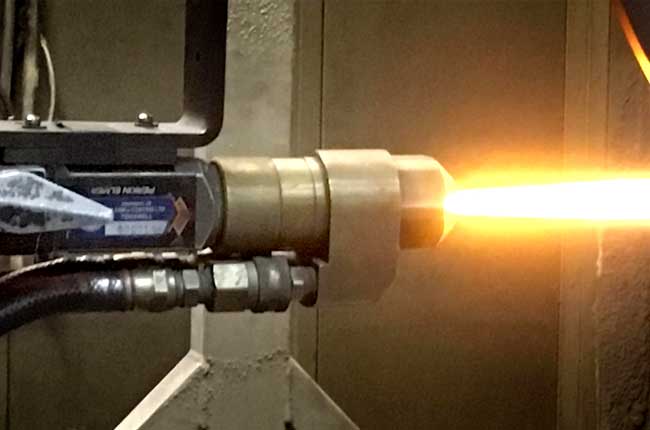
HVOF spraying has been developed principally to produce high quality metal and carbide coatings equivalent to the D – Gun process and with superior properties to conventional flame spray processes.
Main Applications
- Rotary knife blades
- Aero engine parts
- Gate valves
- Pistons
- Shafts
High Velocity Oxy-Fuel Process Description
The HVOF process typically uses hydrogen as the fuel gas mixed with oxygen to give coatings of the highest quality.
The gas mixture is supplied at high pressure and combusted to produce a high velocity flame with a temperature of up to 3,000°C.
Powder material is then injected through the flame and the molten particles are accelerated up to velocities greater than the speed of sound which are then impacted onto the work piece.
Precise control of all spraying parameters and powder feed rates; and the use of a robot to precisely position the gun, enables high quality coatings to be consistently applied on a large variety of different components.
General Coating Characteristics
- high bond strength
- high density
- low porosity
- low oxide
- high hardness (e.g. Tungsten Carbide Cobalt, WC/Co).
- fine surface finish in as-sprayed condition, or able to be ground or lapped to a superfine finish.
- excellent wear resistance from abrasion, erosion or fretting
- superb corrosion resistance (against the effects of hot corrosion and oxidation)


